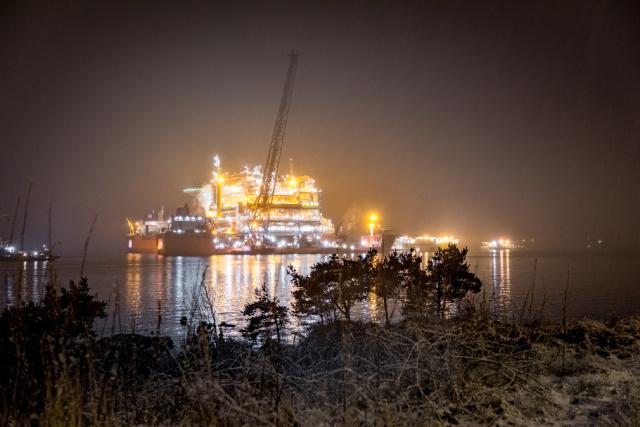
The 24,000-tonne topsides for the Aasta Hansteen gas platform was floated over and connected to the floating vertical hull in December 2017. (Photo by Olaf Nagelhus/Worldcam, courtesy of Statoil)
After three years of contending with formidable market conditions, upstream companies have begun the arduous task of getting back to what they do best: finding and producing oil and gas. While the offshore sector certainly felt the impact of the price crash, it did not leave it comatose. One need only look at the last months of 2017 to see the promise of 2018.
Take, for example, new discoveries announced off the coasts of Equatorial Guinea, Guyana, Russia and Trinidad, which show that exploration is not dead. A flurry of field development proposals were submitted to the Norwegian Petroleum Directorate (NPD) for consideration. The seven plans submitted to the NPD represent a total value of more than $12.5 billion in greenfield capex, according to a report from Rystad Energy.
In December 2017 a 46,000-tonne floating vertical hull received its topsides crown to become the world’s largest spar FPSO unit. That spar will be located in the Aasta Hansteen gas field located in the deep waters of the Norwegian Continental Shelf about 300 km (186 miles) from Bodø.
Subsea will play a significant role in the success in these future or current fields. Like all in the industry, subsea players face a new future where lessons learned from previous projects and standardization are helping to ensure long-term growth.
This month E&P takes a step back to the basics with a look at how operators are identifying the best locations to place subsea equipment during the field development phase. Other stories include a dive into the considerations made during the design and selection process of subsea production systems. Also covered is a new digital platform that integrates robotics, artificial intelligence and original predictive analytics to advance subsea inspection services. The section wraps up with an overview of how operators are bringing together current infrastructure with future subsea projects.
Read each of E&P magazine's February cover stories:
Back to basics on seabed surveys
Optimizing system design and field architecture
Recommended Reading
SLB’s ChampionX Acquisition Key to Production Recovery Market
2024-04-19 - During a quarterly earnings call, SLB CEO Olivier Le Peuch highlighted the production recovery market as a key part of the company’s growth strategy.
PHX Minerals’ Borrowing Base Reaffirmed
2024-04-19 - PHX Minerals said the company’s credit facility was extended through Sept. 1, 2028.
BP Restructures, Reduces Executive Team to 10
2024-04-18 - BP said the organizational changes will reduce duplication and reporting line complexity.
Matador Resources Announces Quarterly Cash Dividend
2024-04-18 - Matador Resources’ dividend is payable on June 7 to shareholders of record by May 17.
EQT Declares Quarterly Dividend
2024-04-18 - EQT Corp.’s dividend is payable June 1 to shareholders of record by May 8.





